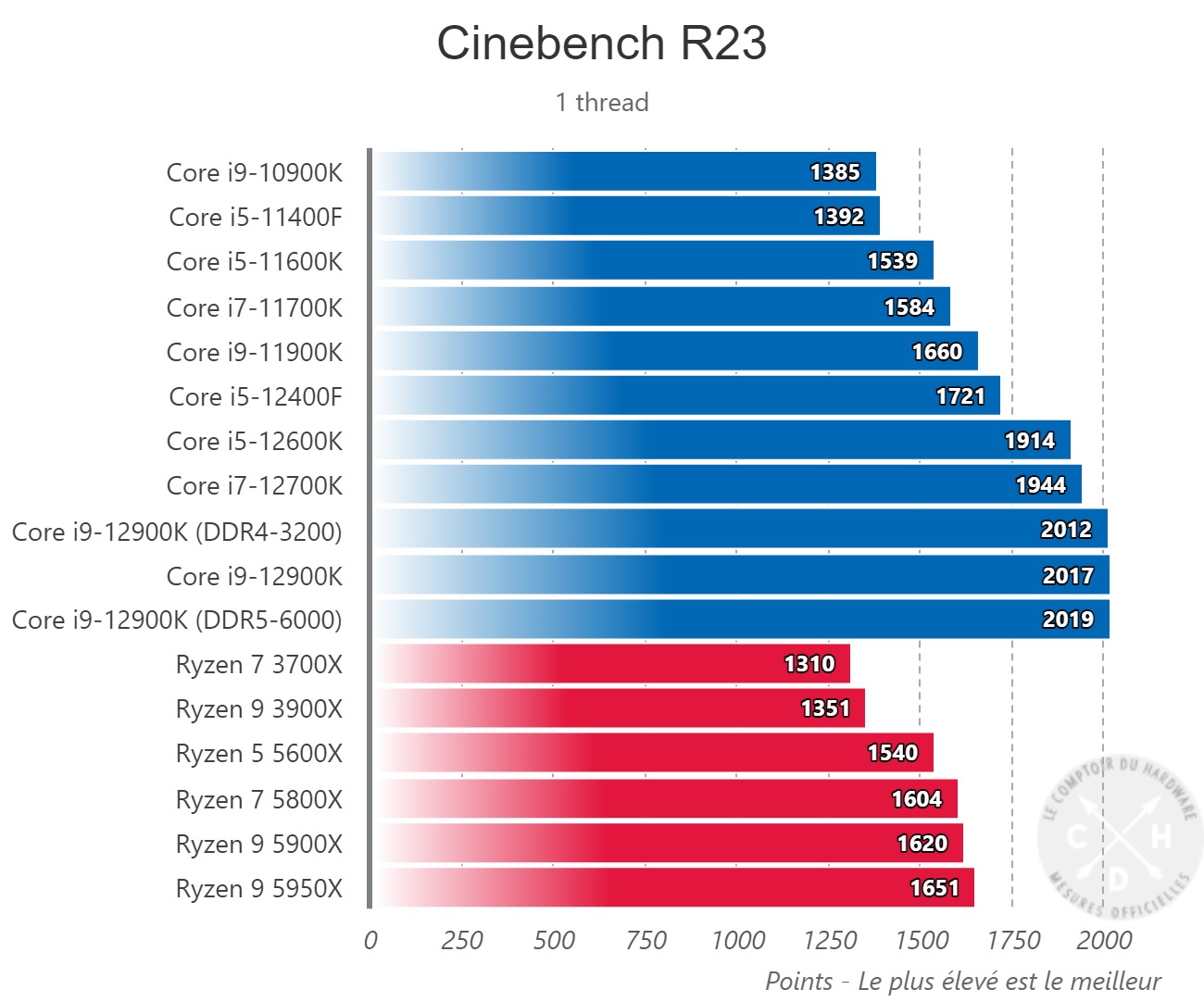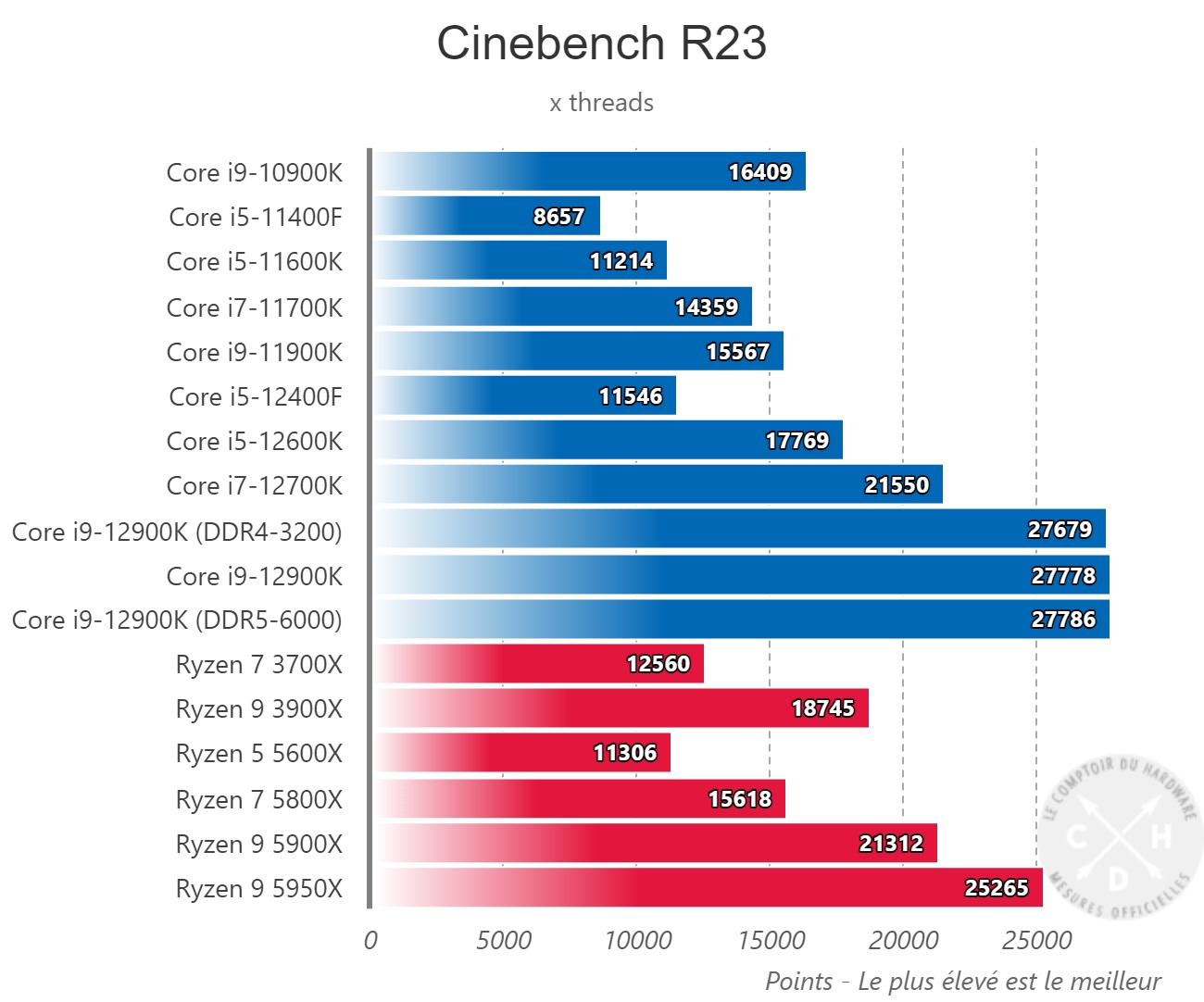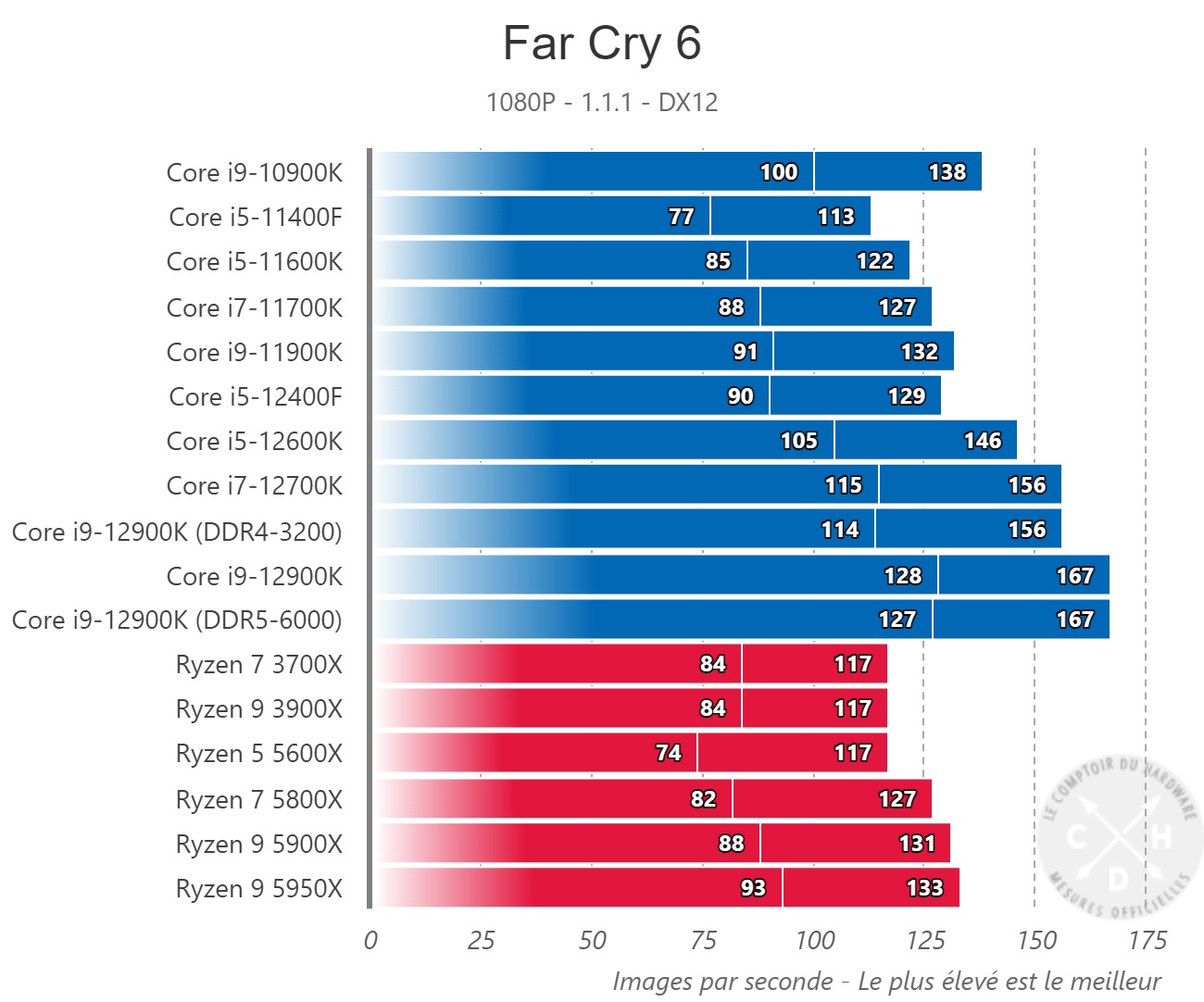Core i5-12400F Shows Strong Gaming Performance in New Benchmarks
A Ryzen 5 5600X killer?
Thanks to Comptoir Hardware, we have our first look at performance benchmarks for Intel's Core i5-12400F 6-core, 6-threaded processor which could potentially vie to become one of the best CPUs for gaming. Comptior Hardware managed to grab an engineering sample of the processor and run it through a suite of gaming and synthetic benchmarks. According to the review, gaming performance is neck and neck with Intel's previous-generation 11900K flagship CPU and Ryzen 7 5800X.
The Core i5-12400F is one of Intel's most unique Alder Lake CPUs to date; it features six performance cores while disabling or deleting all efficiency cores. Comptior notes that its engineering sample appears to have the same die as the 12600K, 12700K, and 12900K. But to expect a new die on the official model that physically lacks efficiency cores.
Other specifications include a 65W TDP, 18MB of L3 cache, and a lack of Turbo Boost 3.0, limiting the CPU clock speed to a base frequency of 3.4 GHz and a flat 4 GHz peak boost frequency. Timed Turbo Boost limits are also back, with a peak power consumption of 117W for 56 seconds before the chip throttles back to 65W permanently for the rest of the workload.
With how invested Intel is in its hybrid architecture strategy, it's somewhat surprising to see a Core i5 that lacks efficiency cores. However, the advantages to this configuration could be more beneficial than it looks on paper. For one, lacking efficiency cores can drive costs down, especially with a new die.
Plus, the lack of E cores on the CPU can also provide better compatibility with operating systems like Windows 10 and applications that don't fully support Intel's hybrid architecture just yet. This means the 12400F could be one of the few Alder Lake chips that can run Windows 10 without encountering performance anomalies.
Benchmarks:


Looking at Comptior's Cinebench R23 scores, the 12400F does incredibly well in this synthetic test. In the single-threaded test, the chip managed to score 1721 points, giving it a near 100 point lead over AMD's fastest single-threaded beast, the Ryzen 9 5950X. The same also happens to the 12400F compared to Intel's 11900K.
But, when switching to the multi-core tests, the lack of efficiency cores makes a big difference to highly threaded workloads. The 12400F comes out with a score of 11546.
Get Tom's Hardware's best news and in-depth reviews, straight to your inbox.
The 12400F does manage to beat all other six-core processors in the test, like the 5600X and previous-gen 11600K by 200-300 points. However, the chip gets decimated by all of its 8-core rivals and beyond.
This is in direct contrast to the 12400F's bigger brother, the 12600K, which scored a significantly higher 17769 points. This shows that Intel's efficiency cores can make a big difference to performance, despite being optimized for power efficiency.

Despite being weak in the multi-core test, the 12400F makes a huge comeback in the gaming department. In Far Cry 6, the 12400F goes toe to toe with its previous-gen relative, the Core i9-11900K, and matches performance with the Ryzen 7 5800X and Ryzen 9 5900X.
Remember that the 12400F is at a large clock speed disadvantage with a peak boost of just 4 GHz. So compared to the 11900K, the 12400F is operating at around a full 1 GHz deficiency in clock speed. This really shows how much raw IPC the Alder Lake architecture is capable of compared to Intel's final 14nm architecture Rocket Lake.
For more benchmark info, check out Comptoir's full review here.
Intel's new i5-12400F is shaping up to be a very good processor if the price is right. We don't have any details on pricing just yet, but if the 12400F is priced anywhere around the $200-$250 mark, it could make it on our list as one of the best gaming CPUs on the market for budget-oriented gamers.

Aaron Klotz is a contributing writer for Tom’s Hardware, covering news related to computer hardware such as CPUs, and graphics cards.
-
Dr3ams Every reviewer I saw on YouTube was using a high end RTX for benching. A more realistic benchmark would be one using GPUs that most users have or can afford. The subsequent bottleneck would make any claims by Intel or the reviewers moot.Reply -
VforV I actually want this 12400f to be as good as Ryzen 5600x, but only because I want to upgrade my Ryzen 3600, so AMD should drop the prices quite a bit.Reply
Otherwise I couldn't care less about Alder Lake. -
helper800 Reply
Well you are in luck because it seems it is at least as good as a 5600x and probably a little faster. The thing is the intel platform cost will drive up the price for a while making it less of a value proposition than it initially seems. When the b660 motherboards come out and DDR5 becomes reasonable 100 dollars for 16gb or 200 for 32gb, then we are talking huge value over current AMD. I suspect AMD will shift the cost of its current stack by about 20-50 dollars eventually as well though.VforV said:I actually want this 12400f to be as good as Ryzen 5600x, but only because I want to upgrade my Ryzen 3600, so AMD should drop the prices quite a bit.
Otherwise I couldn't care less about Alder Lake. -
King_V Now with this, I will say I'm impressed. If they're really getting that performance, and keeping it within the 65W envelope, then Intel has done a good thing here.Reply -
LolaGT Wow, looks to be a little beast. They will sell a bunch of those to the blue badge average gaming crowd. .Reply -
TerryLaze Reply
Yes and productivity should be done with a more realistic benchmark like facebook and gmail because that's what people do.Dr3ams said:Every reviewer I saw on YouTube was using a high end RTX for benching. A more realistic benchmark would be one using GPUs that most users have or can afford. The subsequent bottleneck would make any claims by Intel or the reviewers moot. -
salgado18 Reply
It doesn't for almost a minute, enough to run a benchmark. Does it keep performance up for extended periods of time, say a few Metro runs like Tom's does?King_V said:Now with this, I will say I'm impressed. If they're really getting that performance, and keeping it within the 65W envelope, then Intel has done a good thing here.
I mean, if the performance numbers are measured on loose power limits, then it is a 117W processor, not a 65W. If you constraint it to 65W (and the others to their limits), how do they behave over time? People on cheaper motherboards don't play games for 56 seconds. -
TerryLaze Reply
For any of this to matter you would first have to measure how much power metro or any other game draws. The 12400 has a 4Ghz top so it might never even reach 65W when running a game, especially at higher resolutions or with weaker GPUs.salgado18 said:It doesn't for almost a minute, enough to run a benchmark. Does it keep performance up for extended periods of time, say a few Metro runs like Tom's does?
I mean, if the performance numbers are measured on loose power limits, then it is a 117W processor, not a 65W. If you constraint it to 65W (and the others to their limits), how do they behave over time? People on cheaper motherboards don't play games for 56 seconds.
In general "lose power limits" is an average meaning it will not go above PL1 if it doesn't go equally below PL1 as well.
Same goes for turbo duration, it will only reach the full pl2 if it doesn't skew the average and only for as long as it doesn't skew the average.
Keep in mind that most if not all benchmarks you have seen have been with power limits lifted and infinite TAU.
https://www.intel.com/content/www/us/en/products/docs/processors/core/core-technical-resources.html
-
King_V ReplyTerryLaze said:Keep in mind that most if not all benchmarks you have seen have been with power limits lifted and infinite TAU.
If that is the "out of the box experience" then that's what should be applied, no?
Unless you're telling us that AM4 boards also allow the 65W CPUs to go as high as the max wattage that the AM4 socket supports (in the 140s or so, I think).